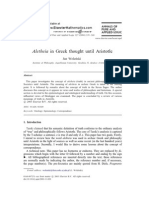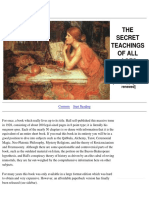0% found this document useful (0 votes)
8K views15 pagesQ2 - WS - Science 8 - Lesson 1 - Week 1
This document is a Learning Activity Sheet for Science Grade 8, focusing on the development of the structure of the atom as part of the MATATAG K to 10 Curriculum pilot implementation for SY 2024-2025. It includes activities and objectives related to historical figures in atomic theory, such as Democritus, John Dalton, J.J. Thomson, and Robert Millikan, along with experiments to illustrate concepts like the law of conservation of mass. The material is intended for teacher use only and prohibits unauthorized reproduction.
Uploaded by
Christian Layson LabastidaCopyright
© © All Rights Reserved
We take content rights seriously. If you suspect this is your content, claim it here.
Available Formats
Download as PDF, TXT or read online on Scribd
0% found this document useful (0 votes)
8K views15 pagesQ2 - WS - Science 8 - Lesson 1 - Week 1
This document is a Learning Activity Sheet for Science Grade 8, focusing on the development of the structure of the atom as part of the MATATAG K to 10 Curriculum pilot implementation for SY 2024-2025. It includes activities and objectives related to historical figures in atomic theory, such as Democritus, John Dalton, J.J. Thomson, and Robert Millikan, along with experiments to illustrate concepts like the law of conservation of mass. The material is intended for teacher use only and prohibits unauthorized reproduction.
Uploaded by
Christian Layson LabastidaCopyright
© © All Rights Reserved
We take content rights seriously. If you suspect this is your content, claim it here.
Available Formats
Download as PDF, TXT or read online on Scribd
/ 15







































































































